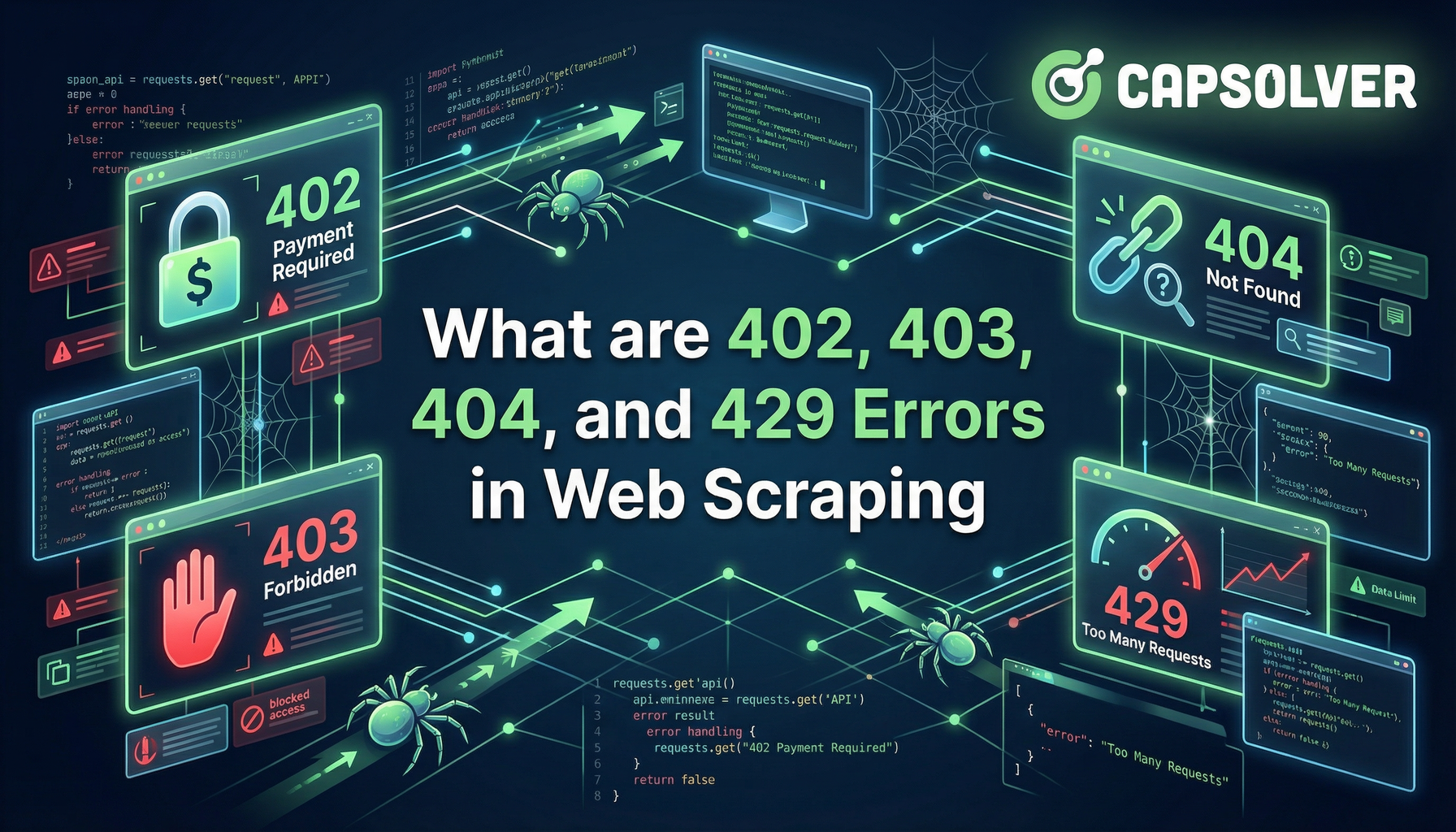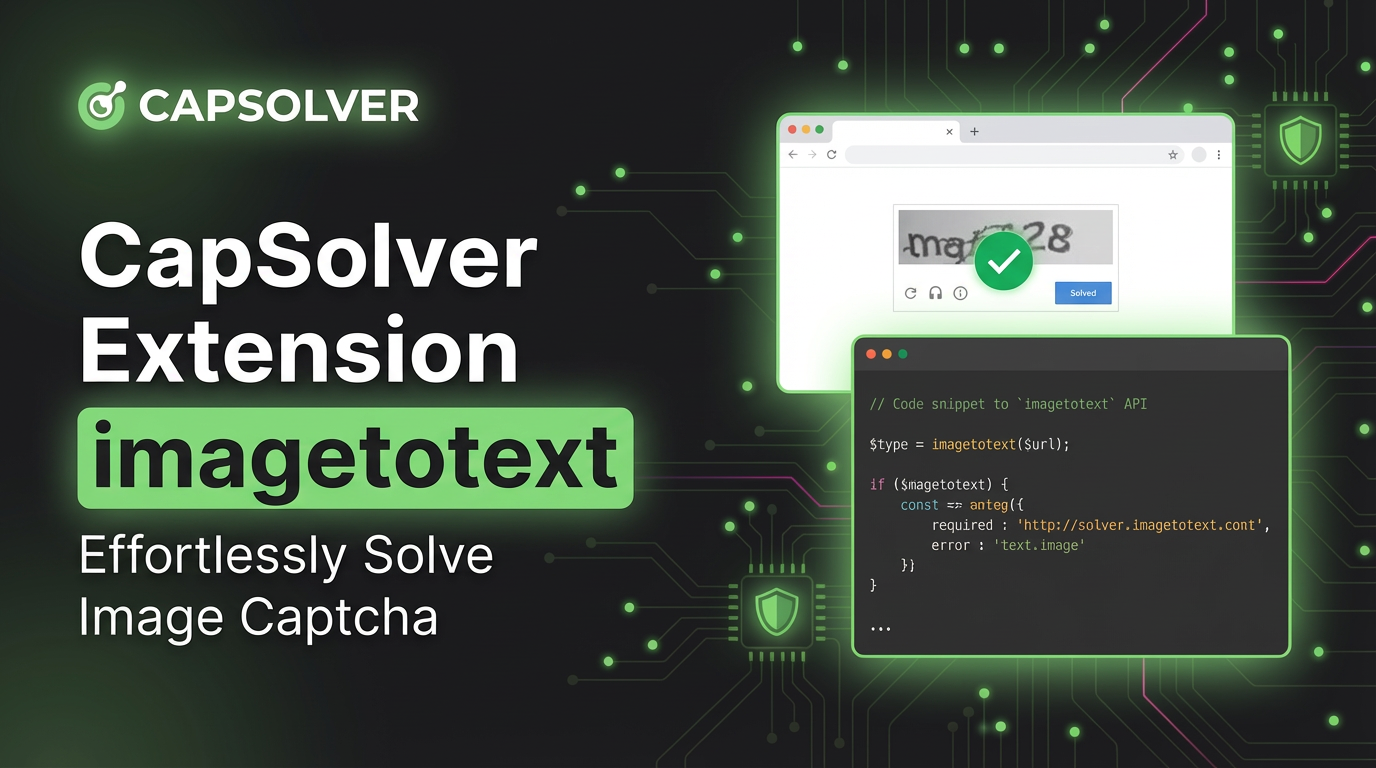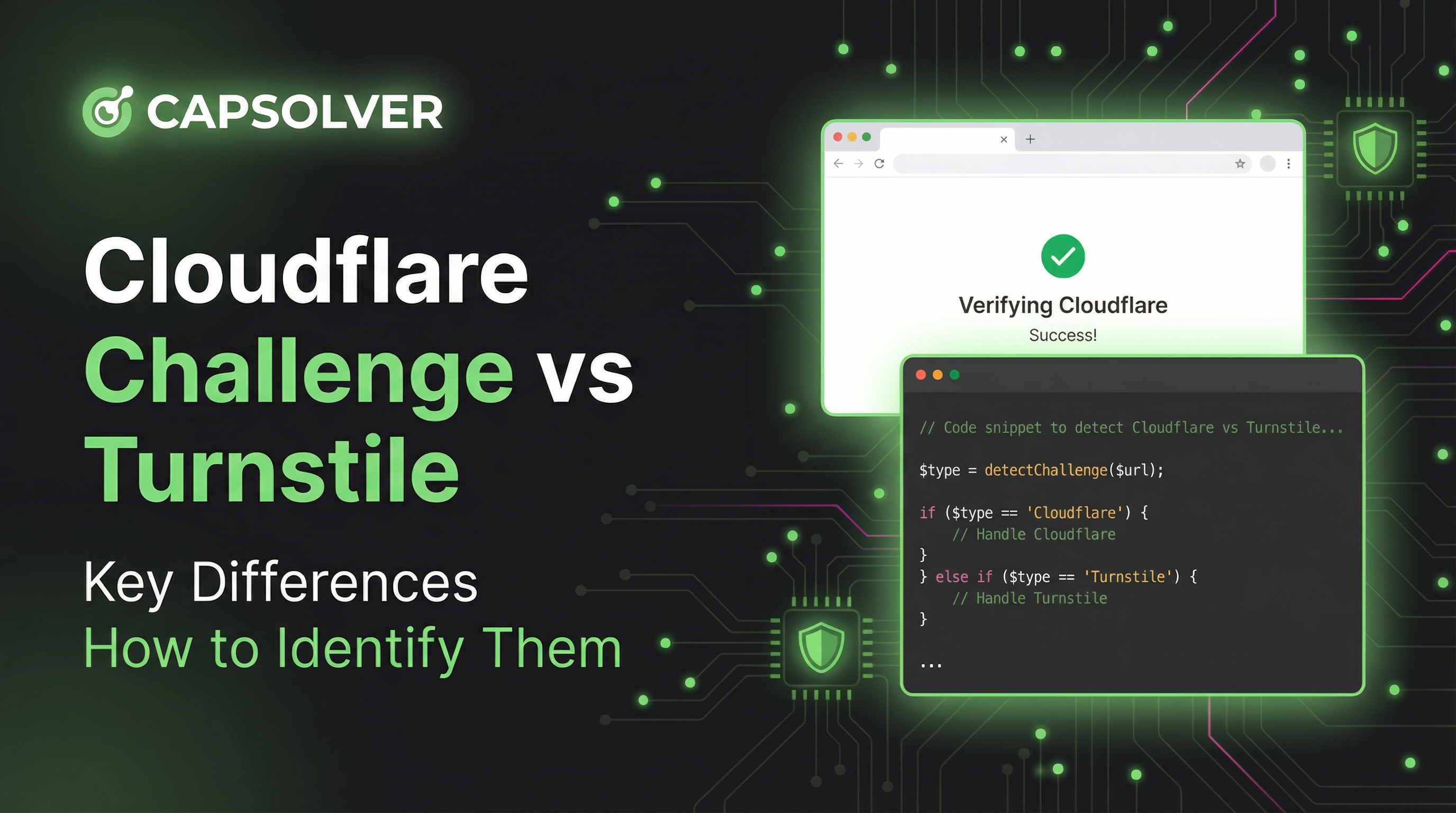How to Use Requests (Python Library) for Web Scraping

Lucas Mitchell
Automation Engineer
04-Sep-2024
How to Use Requests (Python Library) for Web Scraping

Web scraping allows you to extract data from websites, but websites may implement anti-scraping measures such as captchas or rate-limiting. In this guide, we’ll introduce the Requests library and provide an example of how to scrape data from a live website: Quotes to Scrape. Additionally, we'll explore how to handle reCAPTCHA v2 challenges using Requests and Capsolver.
What is Requests?
Requests is a simple and powerful Python library used to make HTTP requests. It's widely used for tasks like interacting with APIs, downloading web pages, and scraping data. With its user-friendly API, it's easy to send requests, handle sessions, and deal with HTTP headers and cookies.
Key Features:
- Simple API for sending requests
- Support for sessions and cookies
- Automatic handling of redirects and proxies
- Custom headers for simulating browser requests
Prerequisites
Install the Requests library using pip:
bash
pip install requestsExample: Scraping Quotes to Scrape
Let’s start with a basic web scraping example where we’ll extract quotes from the Quotes to Scrape website using Requests.
python
import requests
from bs4 import BeautifulSoup
# URL of the page to scrape
url = 'http://quotes.toscrape.com/'
# Send a GET request to the page
response = requests.get(url)
# Check if the request was successful
if response.status_code == 200:
# Parse the page content using BeautifulSoup
soup = BeautifulSoup(response.text, 'html.parser')
# Find all the quotes on the page
quotes = soup.find_all('span', class_='text')
# Print each quote
for quote in quotes:
print(quote.text)
else:
print(f"Failed to retrieve the page. Status Code: {response.status_code}")Explanation:
- We send a GET request to the Quotes to Scrape website.
- We use BeautifulSoup to parse the HTML content.
- We extract and print all the quotes found on the page.
How to Solve reCAPTCHA v2 with Requests
Some websites, however, may employ reCAPTCHA to prevent scraping. In this case, solving reCAPTCHA is necessary before accessing content. Using Capsolver alongside Requests, we can automate the captcha-solving process.
Prerequisites
Install the Capsolver library:
bash
pip install capsolver requestsExample: Solving reCAPTCHA v2
Below is a sample script that solves reCAPTCHA v2 challenges using Capsolver and sends a request with the solved captcha token:
python
import capsolver
import requests
# Consider using environment variables for sensitive information
PROXY = "http://username:password@host:port"
capsolver.api_key = "Your Capsolver API Key"
PAGE_URL = "https://example.com"
PAGE_KEY = "Your-Site-Key"
def solve_recaptcha_v2(url, key):
solution = capsolver.solve({
"type": "ReCaptchaV2Task",
"websiteURL": url,
"websiteKey": key,
"proxy": PROXY
})
return solution['solution']['gRecaptchaResponse']
def main():
print("Solving reCaptcha v2")
solution = solve_recaptcha_v2(PAGE_URL, PAGE_KEY)
print("Solution: ", solution)
# Headers to simulate browser
headers = {
'User-Agent': 'Mozilla/5.0 (Windows NT 10.0; Win64; x64) AppleWebKit/537.36 (KHTML, like Gecko) Chrome/91.0.4472.124 Safari/537.36'
}
# Data payload with the captcha solution
data = {
'g-recaptcha-response': solution
}
# Send GET request to the target page with the captcha solution
response = requests.get(PAGE_URL, headers=headers, data=data, proxies={"http": PROXY, "https": PROXY})
# Check the response status and print the content if successful
if response.status_code == 200:
print("Successfully bypassed captcha and fetched the page!")
print(response.text)
else:
print(f"Failed to fetch the page. Status Code: {response.status_code}")
if __name__ == "__main__":
main()Explanation:
- Capsolver API: The
solve_recaptcha_v2function sends the site’s key and URL to Capsolver, along with proxy information, to obtain a solved captcha token. - Sending the request: Once the captcha is solved, the
g-recaptcha-responseis included in the request data payload and sent with custom headers to the target URL. - Simulating browser requests: We use a custom
User-Agentheader to avoid detection as a bot.
Web Scraping Best Practices
When web scraping, it is essential to be ethical and follow best practices:
- Respect
robots.txt: Always check the website'srobots.txtto ensure scraping is permitted. - Rate Limiting: Introduce delays between requests to avoid overwhelming the website and reduce the risk of getting blocked.
- Use Proxies: Rotate proxies to prevent IP blocks, especially when scraping at scale.
- Spoof Headers: Simulate browser behavior by using custom headers like
User-Agent. - Use TLS
- Headers matching your chrome version
- Headers matching the order of the chrome version
Conclusion
The Requests library offers an easy and efficient way to scrape websites, while handling advanced scenarios such as reCAPTCHA can be achieved with Capsolver. Always ensure your scraping activities comply with the website’s terms of service and legal guidelines.
Happy scraping!
Compliance Disclaimer: The information provided on this blog is for informational purposes only. CapSolver is committed to compliance with all applicable laws and regulations. The use of the CapSolver network for illegal, fraudulent, or abusive activities is strictly prohibited and will be investigated. Our captcha-solving solutions enhance user experience while ensuring 100% compliance in helping solve captcha difficulties during public data crawling. We encourage responsible use of our services. For more information, please visit our Terms of Service and Privacy Policy.
More

How to Solve CAPTCHAs in Python Using Botasaurus and CapSolver (Full Guide)
Learn to integrate Botasaurus (Python web scraping framework) with CapSolver API to automatically solve reCAPTCHA v2/v3 and Turnstile.

Lucas Mitchell
12-Dec-2025

What are 402, 403, 404, and 429 Errors in Web Scraping? A Comprehensive Guide
Master web scraping error handling by understanding what are 402, 403, 404, and 429 errors. Learn how to fix 403 Forbidden, implement rate limiting error 429 solutions, and handle the emerging 402 Payment Required status code.

Sora Fujimoto
11-Dec-2025

Best Web Scraping APIs in 2026: Top Tools Compared & Ranked
Discover the best Web Scraping APIs for 2026. We compare the top tools based on success rate, speed, AI features, and pricing to help you choose the right solution for your data extraction needs.

Ethan Collins
11-Dec-2025

CapSolver Extension: Effortlessly Solve Image Captcha and ImageToText Challenges in Your Browser
Use the CapSolver Chrome Extension for AI-powered, one-click solving of Image Captcha and ImageToText challenges directly in your browser.

Lucas Mitchell
11-Dec-2025

Cloudflare Challenge vs Turnstile: Key Differences and How to Identify Them
nderstand the key differences between Cloudflare Challenge vs Turnstile and learn how to identify them for successful web automation. Get expert tips and a recommended solver.

Lucas Mitchell
10-Dec-2025

How to Solve AWS Captcha / Challenge with PHP: A Comprehensive Guide
A detailed PHP guide to solving AWS WAF CAPTCHA and Challenge for reliable scraping and automation

Rajinder Singh
10-Dec-2025

